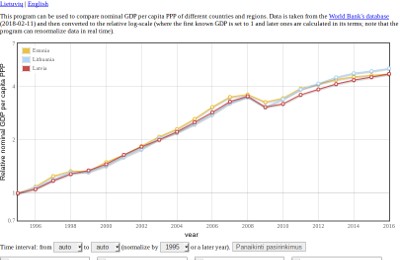Over the years we have written multiple posts about the
economic convergence phenomenon. We have also
provided a couple of interesting apps, which could be used to study the real
world data. Recently we have updated one of them with new data from World Bank
(see this post
or go straight to the related app).
Furthermore we have modified the old app to work with somewhat different data.
Namely, the old app plotted GDP per capita series and the new app plots GDP per
capita PPP series. GDP PPP is more interesting to some researchers as this GDP
index is controlled for differing price levels between the countries.
We invite you to explore the data using the new app!
To open the interactive browser-based program, click on the image or here.

